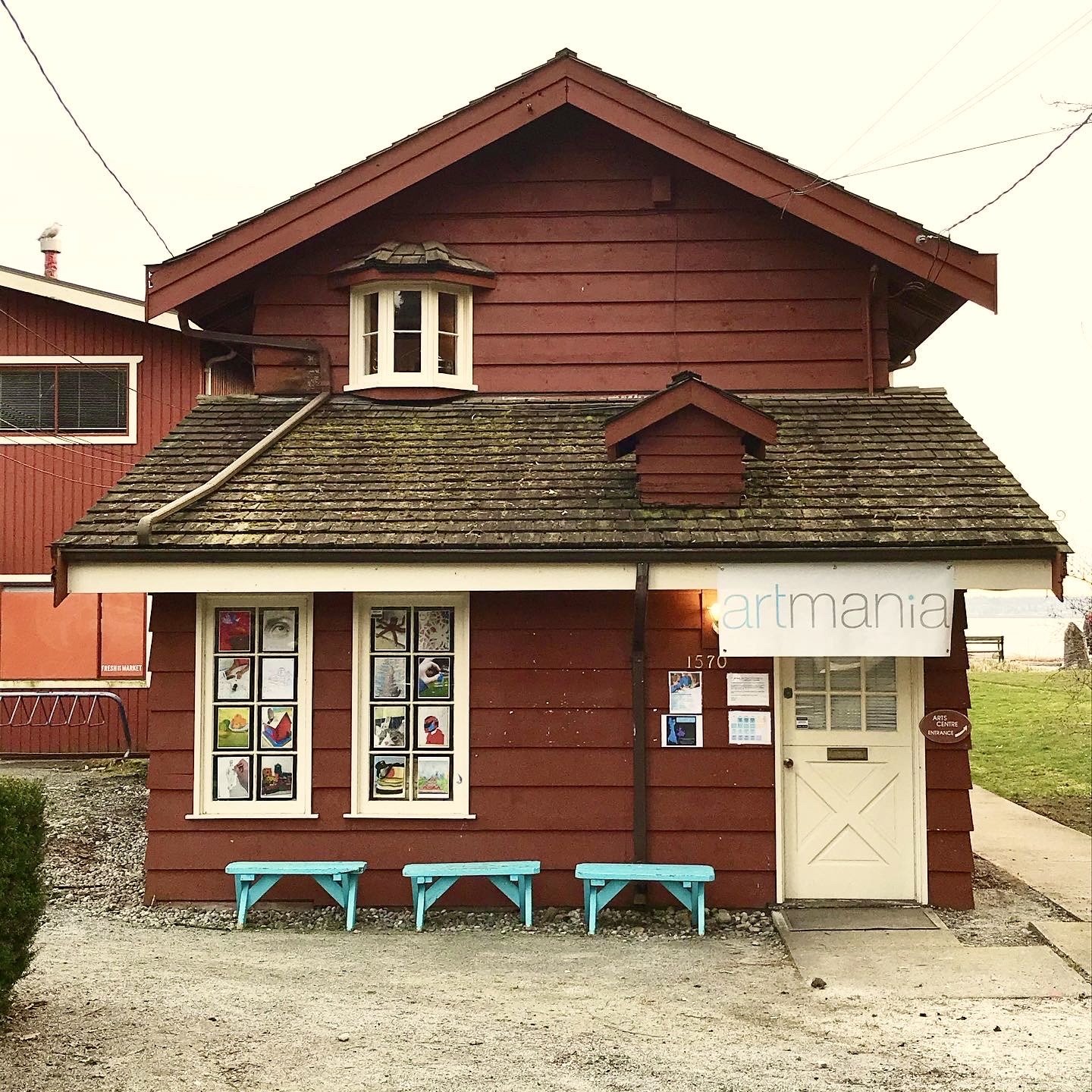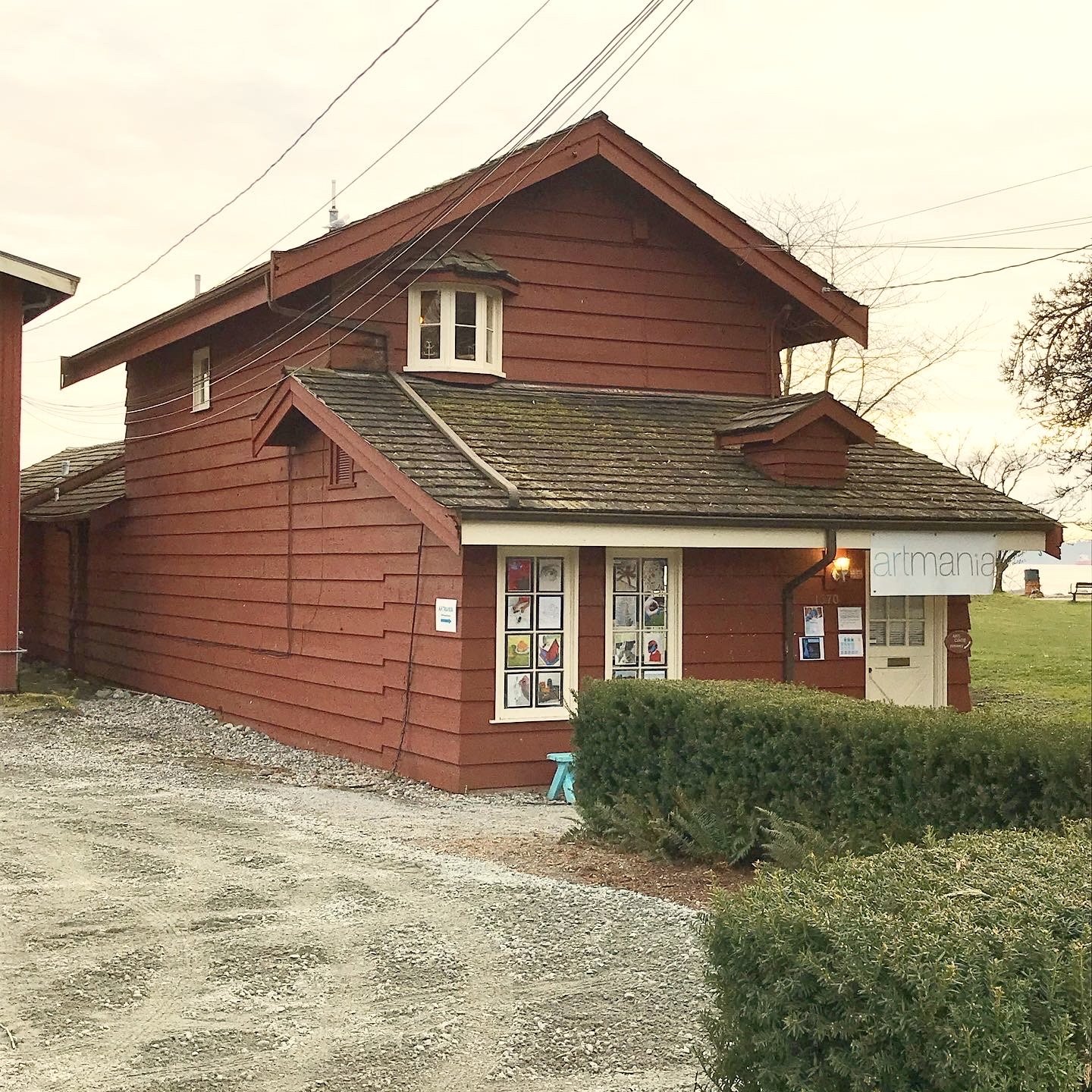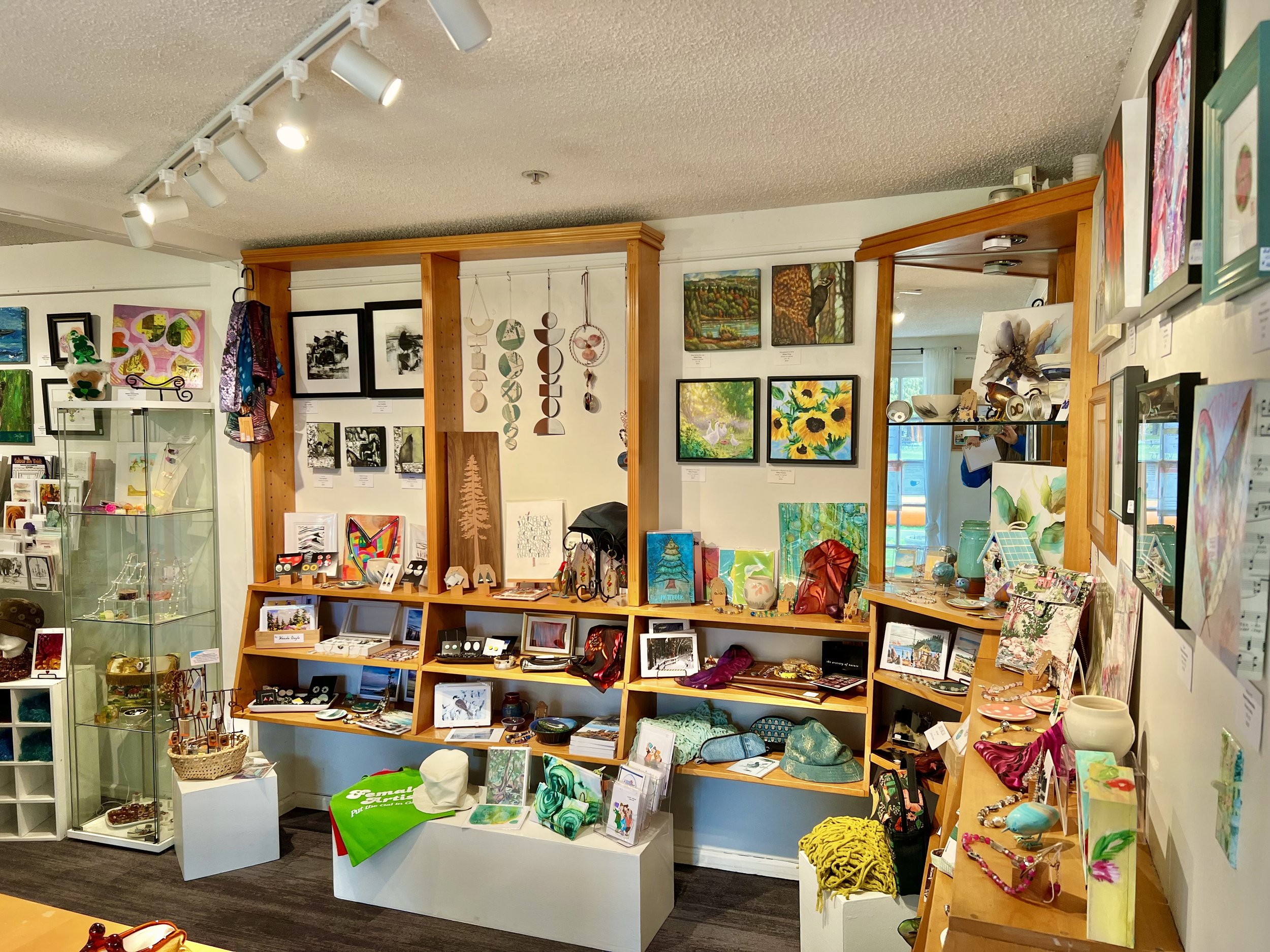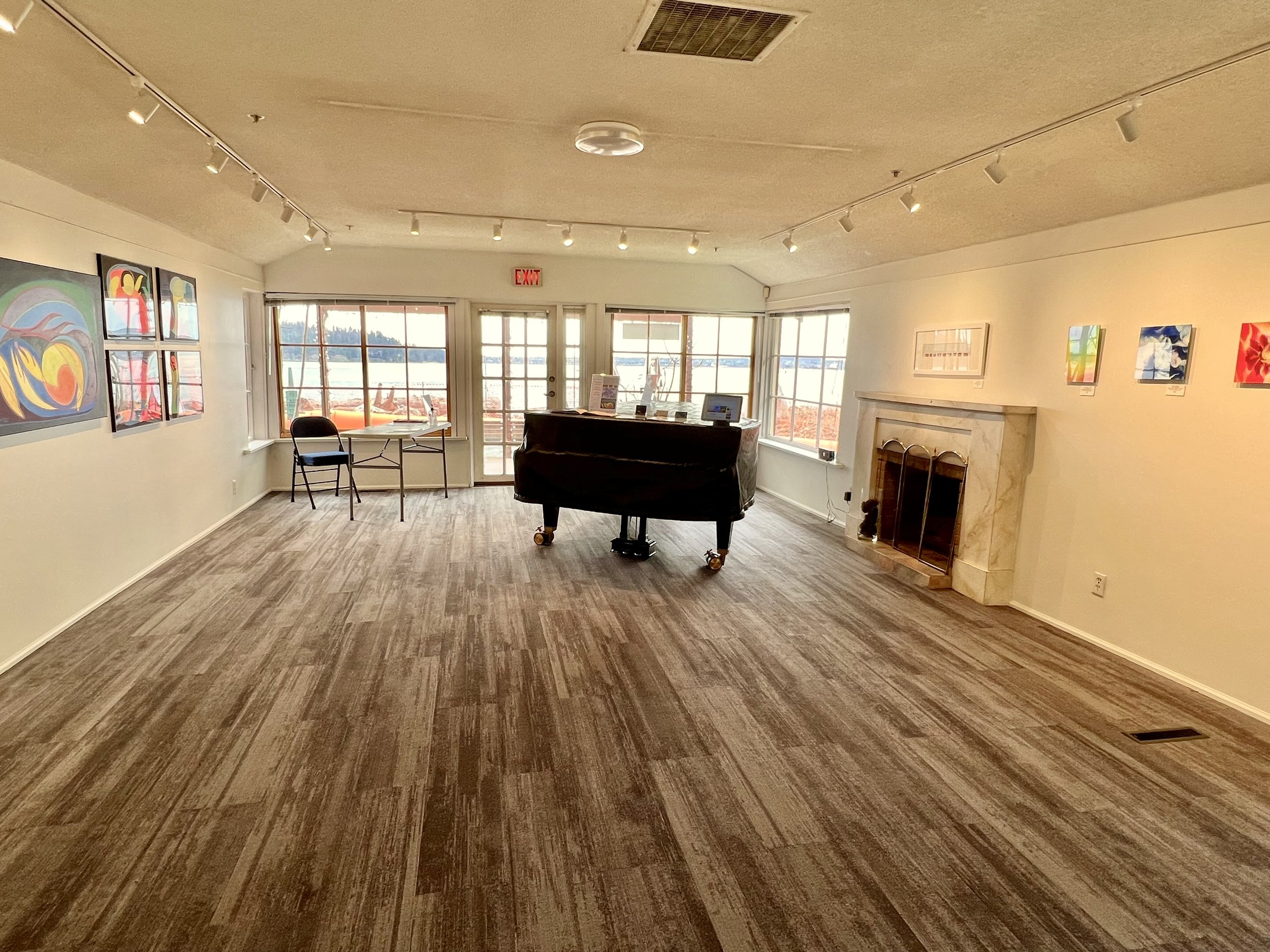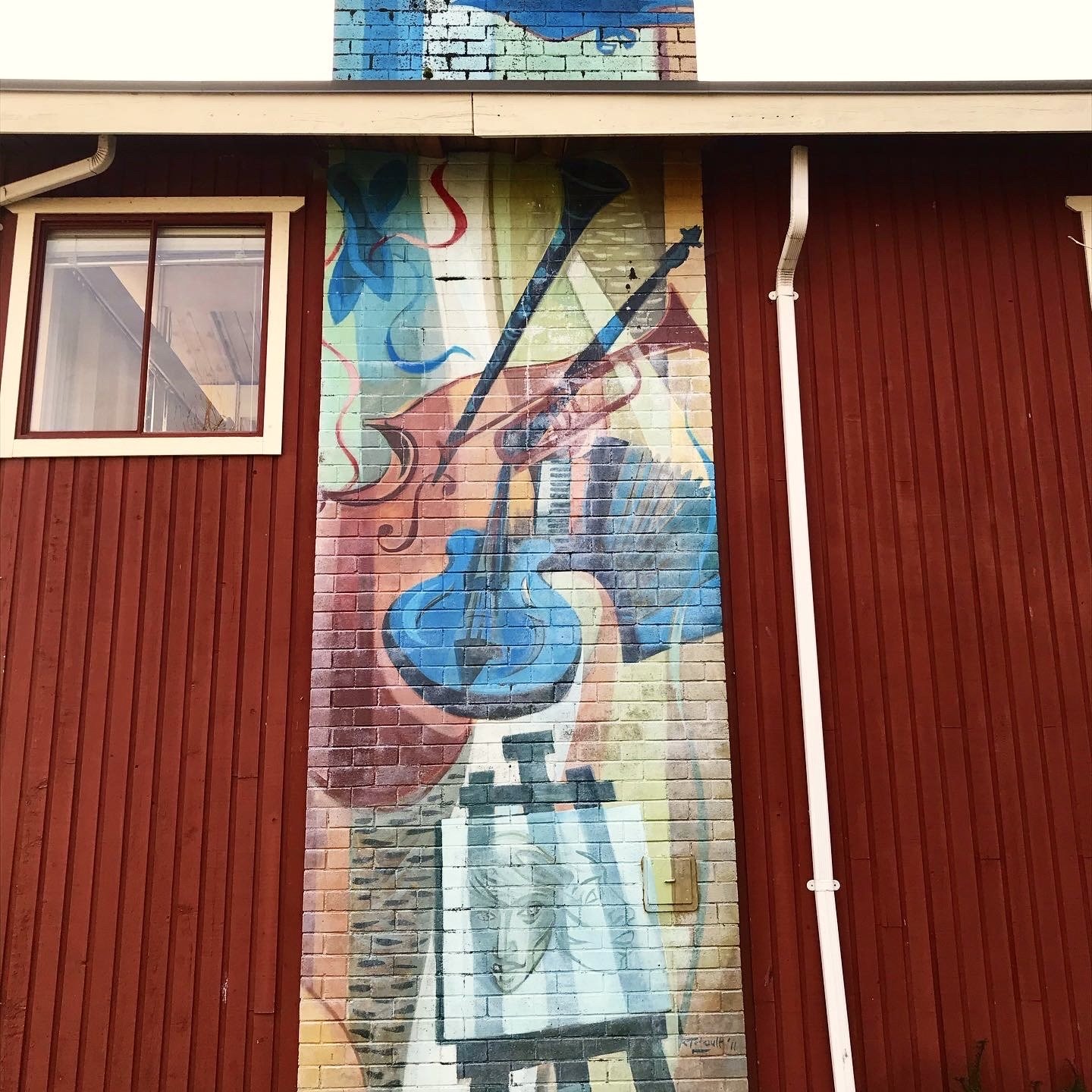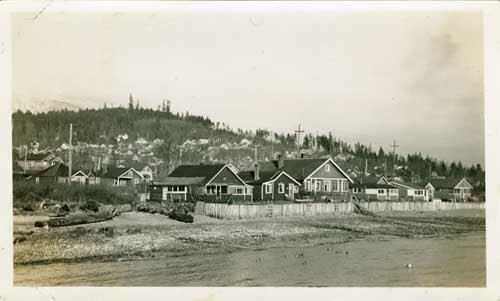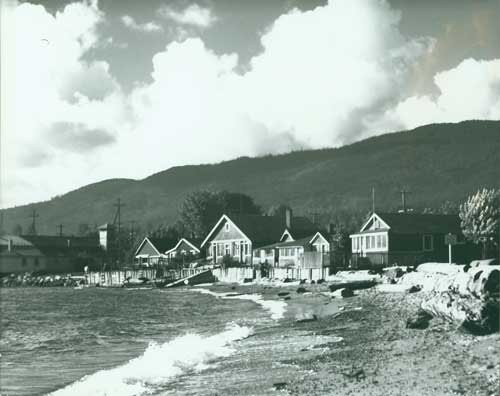Photo by Jenny Morgan
My first encounter with the Silk Purse Arts Centre was a personal one. In the fall of 2019 I decided that my kids were independent enough that I could venture back into the music world as a solo singer/songwriter after a long hiatus. I’d been out of the game so long that the idea of a big venue was both cost-prohibitive and daunting, so when I discovered that the Silk Purse had a grand piano in a beautiful and affordable performance space right on the water that felt like a large living room, I booked it right away. I had about 40 guests come to the concert and fill the room and it was a really wonderful evening. I felt instantly comfortable singing in such a warm and inviting space, as if entertaining in my own home. I was already planning many more concerts there when the pandemic hit a few months later and I was forced to put that idea on hold.
The Silk Purse Arts Centre is listed on West Vancouver’s official website under “Arts and Culture” along with three other buildings: Gertrude Lawson House (West Vancouver Art Museum), the Ferry Building ( an art gallery) and the Music Box (mutlti-use art space). Three of the four are on the Ambleside waterfront. The Gertrude Lawson House is on the Ambleside hillside on 17th Street. These four buildings form a grouping of arts and culture spaces in the Ambleside area, with Silk Purse called the “nucleus of a developing cultural district along Argyle Avenue” in the “statement of significance” the District of West Vancouver (DWV) has on its website. It has been formally recognised as having heritage value since being added to the DWV’s heritage register in 2008.
These spaces make wonderful use of the heritage buildings they occupy by giving them a second life as a community space, promoting arts and culture, and providing an increasingly rare, historic view into what some of the Ambleside waterfront looked like when it was just cottages along the beach with the Ferry Building at the east end (a lively spot when the ferries were running in the early 20th century.) The scale is small and provides a certain relaxed atmosphere to the waterfront. Tall towers and large buildings seem to be dominating more and more of the sky space on the North Shore, but the heritage buildings along the Ambleside waterfront lend a lower, gentler, more “human” scale to the area as well as preserving views from the beach to the mountain and from the mountain to the sea, maintaining a visual connection with nature in both directions. Furthermore, repurposed heritage homes stay out of the landfill and provide a greener option than demolition and rebuilding.
The Silk Purse is located at 1525 Argyle St. in West Vancouver and began its life as a summer cottage when it was built in 1925 - one of a number of cottages used on a seasonal basis along the beach at Ambleside. At some point, the cottage was upgraded for use as a year-round residence. Other cottages also eventually became primary residences and a little community formed along the beach in Ambleside.
Although it has been modified over the years, you can see from my photos below that the current structure of the building still looks very much like a beach cottage. The far right photo is the water-facing exterior of the gallery/performance space.
The building has ties to a few historically significant people. Tom Campbell, Vancouver’s mayor from 1967-1972, inherited the place from his father and sold it to author John Rowland in 1969, who proceeded to renovate it and make it into a quirky honeymoon cottage, full of Canadiana, for rent at $12 a night. It was a bit dilapidated before the renovation and John’s son apparently told his dad it seemed like he was trying to make a “silk purse” out of a sow’s ear. The name stuck.
After a time, Rowland decided to live there with his family and had architect/potter/artist, Zoltan Kiss, expand the home to make it more practical for family living. Kiss was one of the architects who was instrumental in designing and building a number of buildings for SFU. He won third place in a design contest while working for Thompson, Berwick and Pratt and was one of five winners who would help design Simon Fraser University buildings according to design specifications of architectural firm Erickson and Massey.
The DWV began buying homes on Ambleside Beach in the 1970s as part of a long-term plan to transform the West Vancouver waterfront into park and community spaces. It eventually bought John Rowland’s home and acquired it officially in 1991. It made the space available to the The West Vancouver Community Arts Council, ( WVCAC), a not-for-profit organisation, who moved into the space that year and has operated out of it ever since.
The WVCAC, established in 1968, runs a wonderful array of arts and culture programs and provides services for many different individuals and groups. It is open to the public as an art gallery and as a gift shop from Wednesday to Sunday each week, there is a weekly Tuesday concert series that runs two shows a day, local groups rent out the space for events, individuals like teachers rent the space for student recitals, musicians rent the space for concerts, and more!
Below left is the colourful gift shop called the “Art Box” with high quality, artist and artisan made wares, and on the right, the large gallery/performance space with a beautiful view of the water.
I spoke to the Council’s Executive Director since 2016, Jennifer Lord, about the importance of the building as a space for The Arts and asked her whether she felt that it was well used by the community. She told me she thought it was and used the word “loyal” to describe community members who use the building, which to me shows that not only do people use the space on a regular basis, but that they also care about it. I can see how people would become loyal to such a well-run and lovely arts centre.
At the back of the building is a large art studio managed by the DWV and contracted out to “Artmania”. Adding to the list of arts and culture services offered at Silk Purse, Artmania provides many classes for kids including acting and movie production, painting, printmaking and drawing.
Right next door is the Music Box, another Arts space repurposed from a cottage, (a mid-century chalet style home) which runs art classes as well, (but for adults, not kids), such as drawing, painting and multi-media, and has open studio sessions as well as workshops. The Harmony Arts staff also uses this as their headquarters in the summer. The spaces are also available for rental, providing further community use.
Below left is a side-view of the Music Box with its arts-themed chimney mural, and on the right is the water-side view of this chalet style cottage.
These two properties really pack a punch when it comes to offering a wealth of programs and services in a relatively small space.
When I began writing this post, my angle was going to tie it to the BC Heritage theme for this year: Always in All Ways. The extensive offerings at Silk Purse, along with the long-term use of the building in the past and into the future, fit. I imagined the Silk Purse being there for many years to come. However, I learned yesterday that this may not be the case. The DWV has written on its website in an “Art Planning” section that Silk Purse, Music Box and the Art Museum (in Gertrude Lawson House) are “in poor condition and at the end of life” and not worth renovating. I don’t know if I fully agree with that, as most buildings of this small size can be renovated if necessary, but they were deemed to be too small to fit the needs of the community anymore, so the renovation idea, unfortunately, seems to have become a moot point, anyway.
The District’s 2019 “Art Facilities Plan” proposes that a 21,000 square foot space is necessary to replace these three buildings. A 2021 community consultation on two possible sites had a split opinion and raised several concerns. As a result, there was a community engagement program on the next steps with the results brought to the DWV Council. I don’t know what those results were yet, but I do know that even though this huge project is still in the planning stages, there’s a strong possibility that we will lose the three afore-mentioned Arts buildings at some point in the not-too-distant future, two of which are heritage buildings. Only the Ferry Building is a sure thing to remain on the waterfront as it has been moved to a higher location due to flooding concerns and has been restored and preserved for countinued use as a community art gallery. I would personally like to see The Silk Purse remain as well, if somehow possible, as a continued thread from the past and an example of the success that can be had re-purposing a heritage building for public use (especially in the Arts).
I won’t get into a big debate here about whether a very large building is appropriate to replace the other smaller buildings. My purpose has been mainly to write about the Silk Purse’s history and advocate for heritage preservation. However, now that I know about the future plans for Ambleside, it does make me wonder about the trend towards larger buildings, consolidated use buildings as opposed to smaller scale ones spread out, and what the waterfront will look like if nearly every built vestige of the past is gone. I read that one of the last remaining cottages on Argyle Avenue was also bought by the DWV recently to turn into more parkland. Although it was built in 1950 and not considered “heritage”, it is still a reminder that the waterfront used to be a neighbourhood, and I’ll be sad to see it go. Mixed use areas add life and variety to places, in my opinion, so I’ve always appreciated the remaining waterfront Ambleside cottages while they were around.
The last hope for a heritage home preservation on the Ambleside waterfront is now the Navvy Jack House. It is the oldest home remaining on the North Shore (built ca. 1872) with an important and fascinating history and could be restored while also being repurposed for community use such as a coffee house. This has been a long, ongoing concern with both wins and losses. There is still hope it might succeed, with a lot of effort being put into it by heritage advocates in the form of the “Navvy Jack Citizens Group”, but without any certainty, I am curious about how the Ambleside waterfront will look and feel in the next 20 years. Will there be any physical reminders of its residential, recreational and Arts and Culture past? Or will there be only a plaque in its place?
Have you used spaces like The Silk Purse or the Silk Purse itself? Do you like smaller spaces or prefer more spacious ones? How do you feel about heritage preservation on Ambleside Beach and the direction it’s going? Do you support repurposing heritage buildings or prefer purpose-built ones? I realise these are a lot of questions, but although I started out to write a simple article about a small heritage building, it opened my eyes to a range of larger and complex issues and I wonder how you, my readers, also feel about these issues.
Looking east and west at cottages on Ambleside beach.
Photo at L courtesy of West Vancouver Archives item. # 0443.WVA.RAH, Rupert Harrison photo collection, 1938
Photo at R courtesy of West Vancouver Archives item # 3396.WVA.PHO, 1943
Sources: westvancouver.ca, westvancouverite.ca, West Vancouver Historical Society, evelazarus.com, atom.archives.sfu.ca, archives.westvancouver.ca
*All photos are taken by Jenny Morgan unless otherwise credited



